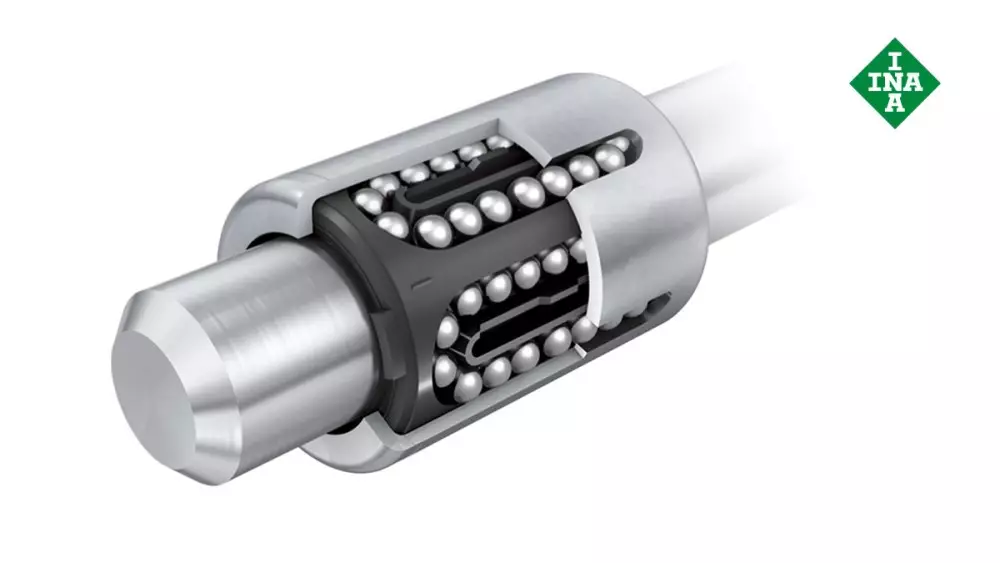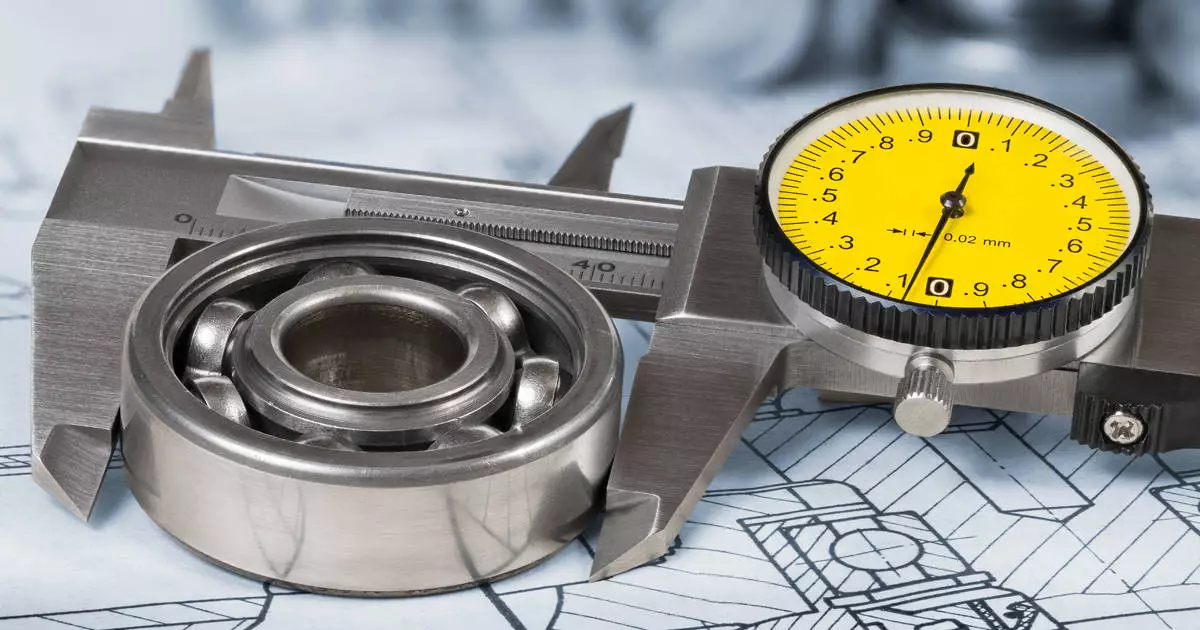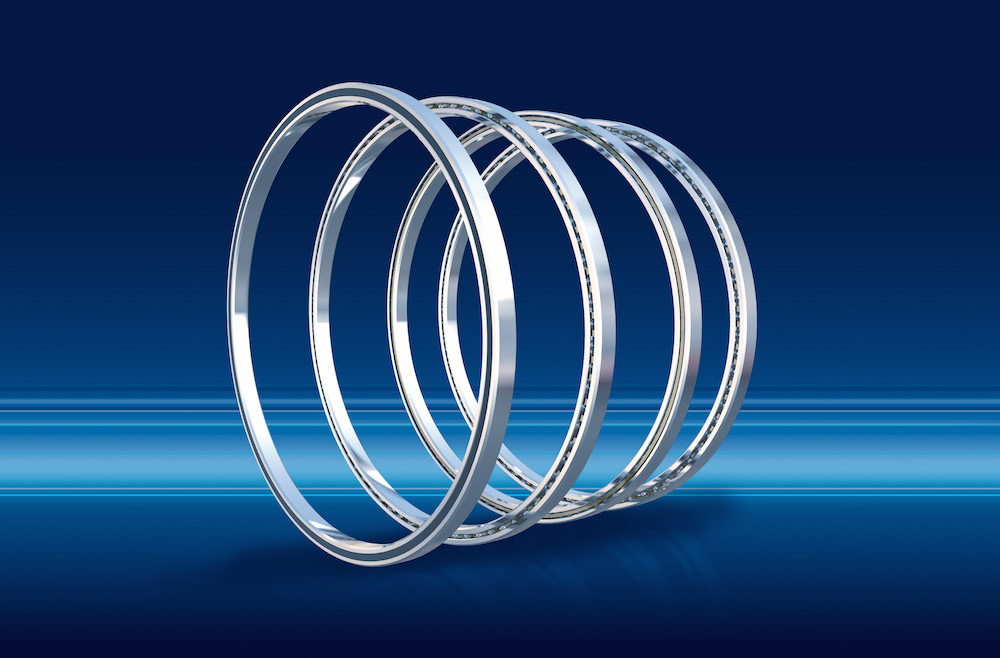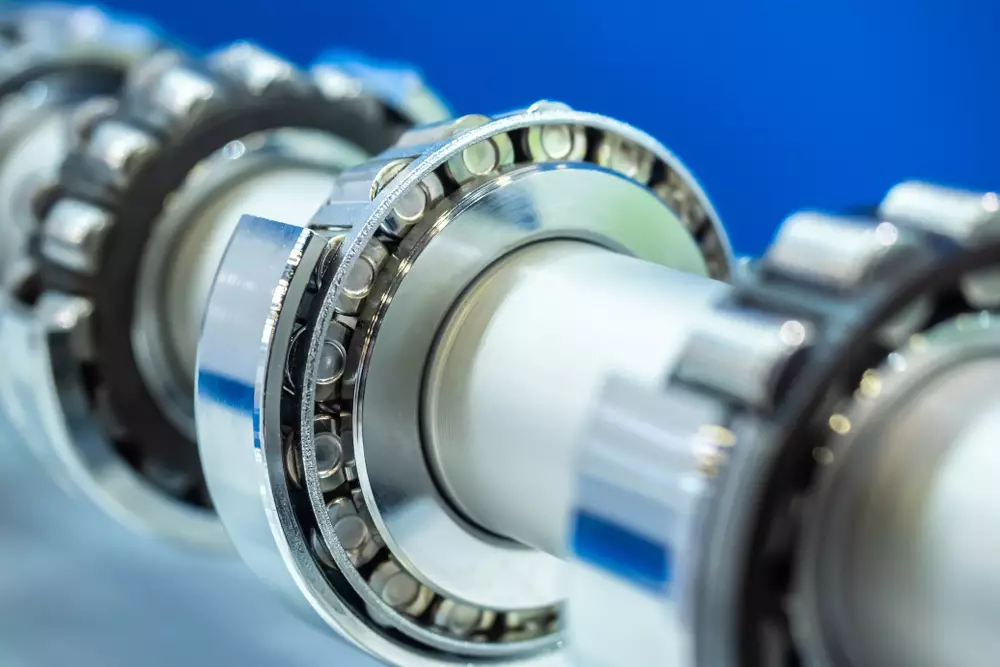
The Benefits of Using Ball Bushing Bearings in Linear Motion
In 1945, linear ball bushings were patented, and they began to be marketed commercially during the 1950’s. Ball bushings were the primary linear motion guidance system until the 1970’s, when profiled linear rail guides were introduced. The choice exists for designers to use the more accurate and more precision linear rail guides or the more economical linear ball bushing. Linear ball bushings have improved over the years, increased load capacities and having the self-alignment feature has given designers a variety of qualified reasons to specify either type in their applications.
Ball bushings are a relatively inexpensive option to achieve linear motion in industrial machinery, robotics, and various mechanical systems. As engineers strive for economy and efficiency, ball bushings provide both. Linear ball bushings are designed to minimize friction and operate smoothly and accurately. They are also a good linear motion option providing precise control, self-alignment, long-lasting performance, and value. This article will consider the reasons for integrating ball bushing bearings into linear motion systems.

Reduced Friction and Enhanced Efficiency
Leading linear bearing manufacturers such as NB Bearing Company manufacture a full product line of linear bushings. Linear ball bushing bearings provide smooth linear motion using the rolling motion of recirculating balls in a channel as the inside raceway. See below the various NB types available. Many linear ball bushing manufacturers offer similar variety models such as those shown here.
What Are Ball Bushing Bearings?
Ball bushing bearings are a type of linear bearing that consists of a cylindrical outer shell with a row or multiple rows of recirculating balls inside. These balls run along a smooth inner race to provide low friction, and precise linear movement. They are designed to carry both radial and axial loads while minimizing wear and extending the service life of machinery.
Certain ball bushing bearing Brands have become industry standards due to their reliable performance and adaptability.
- The Super Series from NB, is recognized widely for its self-aligning capabilities. These bearings are designed to optimize performance across a range of applications, accommodating slight misalignments in the system without sacrificing movement precision.
- The Classic Series also from NB, which includes widely-used models like the TWN series, boasts an impeccable track record for durability. Known for their robust construction, these bearings are suited for heavy-load applications while maintaining a smooth linear motion.
- Precision Steel Series bearings from NB offer high load carrying capabilities along with a design that facilitates easy installation and replacement, a boon for maintenance engineers.
Ball bushing bearings are commonly made from materials like bearing-quality steel or, in some cases, aluminum for the housing. These materials are selected for their strength and compatibility with the balls, which are often made from a hardened steel or, for more demanding applications, ceramics to reduce weight.
Basic Structure of NB Linear Bushing Bearings (SM, SMF, GM)


Key Features At-A-Glance
Linear ball bushing bearings will have a round bore that provides for a space saving design allowing for smaller and lighter components. The shafts provided by Pacific International Bearing are precision ground, which minimizes contact with the ball elements which in turn reduces friction and results in a smoother linear movement. When a double lip seal is incorporated, grease leakage is reduced significantly.

Many manufacturers such as INA and NB produce linear ball bushings as standard or with anti-corrosion components. With the diverse options available, ball bushings can meet the demands for most applications. You can consider linear ball bushing bearings as an option for use in harsh environmental conditions. Linear ball bushing bearings manufactured from resin construction are good choices for low cost or less demanding applications.
Some manufacturers like INA and NB linear bearing company provide both linear ball bushing bearing and matching precision shafting. The NB FIT series is a combination of linear bushing bearing and precision-machined shaft. The best fit between linear bushing and shaft yields a high accuracy performance and smooth operation.
Why Use Resin Material for the Body of the Bushing?
NB, THK, INA, and others use resin material in the manufacture of linear ball bushings where around 50% weight reduction is achieved over conventional steel versions. Even the ball return can be made of resin material, further reducing weight. Another benefit of using resin is the reduction in noise. You should consider the NB GM/GW resin type linear ball bushing bearing for its cost effectiveness and expanded application use. Contact Pacific International Bearing for more information.
- High Load Capacity, Durability, and Cost Savings
Due to the design characteristics of linear ball bushings the user will experience reduced installation time and increased cost savings.
Linear ball bushing bearings provide higher load capacity, longer service life, and reduce material costs. The use of linear ball bushings will yield improvements in energy savings during operation.
- Low Noise and Smooth Operation
As suggested, the use of resin material will enhance the smooth operation and contribute to reducing noise during operation. Bearing noise is reduced especially when the ball retainer is also manufactured from a resin material. Controlling internal play is achieved by specifying higher tolerance versions.
- Design Flexibility and Self Aligning Feature
When considering using linear ball bushings over profiled rails one benefit is the self-aligning feature. Rail guides can provide greater stiffness and carry higher loads, but will bind if used in pairs and not properly aligned. Ball bushings will rotate on the shaft and compensate for any shaft misalignment. Use of ball bushings is also a good option when the mating components are lower precision.
Typical ball bushings are designed to accommodate a misalignment tolerance of ±0.5 degrees. In addition to making up for inaccuracies in mounting surfaces, alignment, or shaft deflection, self-aligning linear ball bushings provide an even distribution of the load across the entire length of the ball bushing. This feature will prevent pressure between the end edge of the bushing and the shaft, making for low friction and smooth-running characteristics.
- Seals
Seals are an option available on ball bushings that are important in many applications where you may encounter the ingress of contaminants.
One consideration when the ball bushing is self-aligning or tilting the seal may lose contact with the shaft and become ineffective. Most manufacturers offer floating seals to overcome this issue and are used to maintain the constant pressure needed for effective sealing. Floating seals are also good for reducing friction found in conventional seals.
- Applications
You can find NB, THK, INA, and all brands of linear bushing bearings in transportation equipment, food processing equipment, semiconductor manufacturing equipment, and industrial robotics as well as numerous industrial, commercial, and scientific systems that require smooth, precise motion.
Applications of Ball Bushing Bearings
- Automation and Robotics
In the automation and robotics industry, the precise and fluid motion provided by ball bushing bearings is indispensable. Models like the NB Super Smart Ball Bushing bearings, identifiable by part numbers such as SSU8 or SSU12, are stellar examples. These bearings facilitate smooth motion in robotic arms, ensuring accurate positioning with minimal friction, which is critical in sensitive automated tasks.
- Material Handling Systems
Ball bushing bearings are foundational to material handling systems, particularly in conveyor belts and linear actuators. The INA KBZ series, with part numbers like KBZ08 and KBZ12, offers a rugged design that can withstand the high-duty cycles and variable loads of material transport, providing reliability and longevity to essential logistics equipment.
- Transport and Packaging Equipment
The rapid and reliable operation of transport and packaging machinery is often credited to ball bushing bearings. They ensure a seamless transition of goods, minimizing downtime and maximizing productivity. Bearings like the THK LM series, particularly part numbers such as LM16UU and LM20UU, are frequently employed for their robust construction and ability to maintain smooth linear motion under continuous use.
- Aerospace and Defense
In the exacting fields of aerospace and defense, ball bushing bearings must meet rigorous standards for performance and precision. High-spec bearings, such as the Danaher Motion Ball Bushing Bearing L, are often used in this sector, recognizable by part numbers like L20 or L30, providing the necessary precision and load capacity for sensitive applications within aircraft systems or military hardware.
- Medical Devices
The medical industry benefits significantly from the high precision and low friction of ball bushing bearings in devices such as MRI machines and precision lab equipment. Here, bearings such as the NB A-Series with part numbers A122026 or A203242 are preferred for their non-magnetic and corrosion-resistant properties, essential in sterile and sensitive medical environments.
The Benefits of Ball Bushing Bearings
Ball bushing bearings are distinguished from other types of linear bearings by their unique set of advantages. The internal ball recirculation system reduces the amount of friction between the bearing and the surface over which it travels. This not only enhances the efficiency of the motion but also contributes to the longevity of the bearing by reducing wear.
Moreover, the structure of ball bushing bearings, which allows for some misalignment, makes them more forgiving than other types of linear bearings, such as roller bearings, which require precise alignment to function correctly.
High Load Capacity and Extended Life
Ball bushing bearings are utilized for their ability to bear significant loads while maintaining a smooth and consistent motion. For instance, the NB Super Smart series SSU16 offers exceptional load capacity, which is pivotal for industrial machinery that demands high reliability over extended operational periods.
Precision and Accuracy
When it comes to precision, ball bushing bearings like the NB Precision Steel A4812 provide tight tolerances and predictable, precise motion, crucial for applications such as 3D printing, CNC machinery, and other equipment where exact movements are imperative.
Reduced Friction
The rolling elements in ball bushing bearings greatly reduce the coefficient of friction compared to plain bearings. This quality is exemplified in models like the INA KBZ Series, particularly part numbers such as INA KBZ24 and KBZ32, which allow for smoother movement of parts and components, translating to greater efficiency and lower energy consumption.
Speed Capabilities
With the ability to maintain high speeds without significant heat generation, ball bushing bearings are ideal for applications requiring rapid motion. Bearings like NB’s LM Series, including part numbers such as LM25UU and LM40UU, sustain the necessary velocity in high-speed automation tasks without sacrificing performance.
Self-Alignment Features
Misalignment can be a critical issue in linear motion systems, potentially leading to uneven wear and failure. Self-aligning ball bushing bearings, such as the NB Super Smart Series adjustable bearings, compensate for misalignment, ensuring the longevity of both the bearing and the machine.
Ease of Maintenance
Many ball bushing bearings are designed to be self-lubricating, minimizing the need for maintenance. The NB Ball Bushing Bearing L series bearings often come with the option of self-lubrication, making them suitable for use in environments where maintenance is difficult or could cause significant downtime.
Buy Ball Bushings now at https://pibsales.com/?s=kn&tab=Products
Conclusion
Linear ball bushings, also known as ball bushing bearings, are mounted on a round shaft used for linear motion guidance. Linear ball bushings are self-aligning and operate with low friction. Because of this, they can be a more economic and efficient option for many linear motion applications.
Still have a question or need to discuss something? Contact Pacific International Bearing Sales Inc at [email protected]


